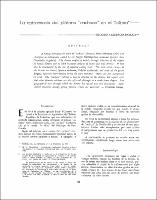La antracnosis del plátano "cachaco" en el Tolima
Abstract
A disease damaging the fruit of “cachaco” plantains, Musa balbisiana Colla, was identified as anthracnose caused by the fungus Gloeosporium musarum (perfect state Glomerella cingulata) The disease originates mainly through infection of the stigma of female flowers and of fresh breakage surfaces of bracts and male flowers. It may also be transmitted by the use of infected cutting tools. The most active vectors of the disease are insects, Synoeca surinama, Polybia occidentalis and some of the genus Trigona (possibly fulviventris) being the common. Spores are also transported by wind. The “cachaco” cultivar is heavily attacked by the disease, but reports exist that other plantain cultivars are also affected although in a much lower degree. The geographical area through which the disease has spread was also determined. Some control measures already giving positive results are described
Keywords
Antracnosis||anthracnosis||antracnose||anthracnose, Plátano||plantains||banana da terra||banane plantain, Musa balbisiana||Musa balbisiana||Musa balbisiana||Musa balbisiana, Gloeosporium||Gloeosporium||Gloeosporium||Gloeosporium, Enfermedad de las plantas||plant diseases||doença das plantas||maladie des plantes, Colombia||Colombia||Colômbia||Colombie,
Delegation
Sede Central
Publisher
Instituto Interamericano de Ciencias Agrícolas (IICA)
Is part of
Turrialba; Vol.13, no. 2
Status
openAccess
URI (Permanet link to cite or share this item)
https://repositorio.catie.ac.cr/handle/11554/13744Collections
- Turrialba [301]


